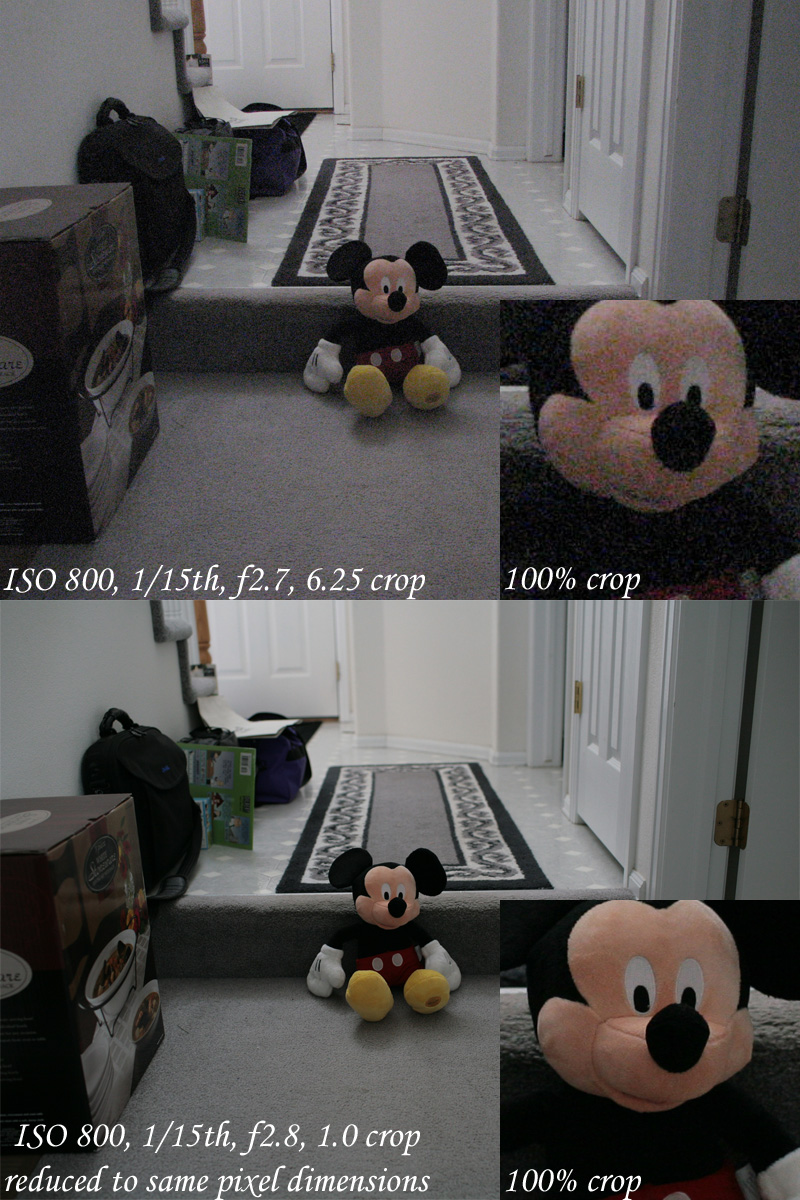Sensitivity and ISO Indication of an Imaging System
The sensitivity of a photo detector is usually represented as the ratio of an output signal level to a received illuminance level. In other words, it is a proportionality constant of the linear curve of the output signal level to the input illuminance.
When the detector is the charge integrating (accumulating) type, the term “illuminance” in the above sentence should be replaced by “exposure,” which is a product of illuminance and the charge integration time.
The above-mentioned “sensitivity” can be defined and measured for both DSCs and image sensors since they both can be considered types of photo detectors. However, it is not a practical “sensitivity” for DSC users because it never identifies which exposure is adequate for taking a picture.
The most important parameter for users is the level of exposure needed to generate an adequate output level to produce a good picture. The ISO indicator of sensitivity in a photographic system represents this “adequate exposure,” which is represented in the equation below:
ISO indication value S = K / Hm [equation B.1]
where
K is a constant and
Hm is the exposure in lux-seconds.
According to the standard ISO 2240 (ISO speed for color reversal films) and ISO 2721 (automatic controls of exposure), a numeric 10 is to be used for K in electronic imaging systems.Thus, the equation can be written as:
S = 10 / Hm [equation B.2]
For example, ISO 100 means that the adequate average exposure
Hm (equal to 10 /
S) of the imaging system is 10/100 = 0.1 (lux-s).
ISO SATURATION SPEED is the
S value when the exposure level generates a picture with image highlights that are just below the maximum possible (saturation) camera signal value. The adequate average exposure
Hm is regarded as 1/7.8 of the exposure level at the saturation point (saturation exposure), where 7.8 is the ratio of a theoretical 141% reflectance (which is assumed to give the saturation exposure with 41% additional headroom, which corresponds to 1/2 “stop” of the headroom equal to an 18% reflectance (the standard reflectance of photographic subjects).
Thus, Equation B.2 can be changed into
Ssat = 78/H where
Hsat is the saturation exposure in lux-s. The saturation speed only shows the saturation exposure as a result.
Suppose there are DSCs that have the same sensitivity at low-to-medium exposure levels, meaning that their tone curves at those levels are identical. If a tone curve of one of them has a deeper knee characteristic near the saturation exposure, the saturation speed of that DSC becomes lower. Thus, it is preferable to use the saturation speed to indicate the camera’s overexposure latitude.
SOS is the
S value when the exposure generates a picture of “medium” output level corresponding to 0.461 times the maximum output level (digital value of 118 in an 8-bit system).
Hm in Equation B.1 corresponds to the exposure that produces 0.461 times the maximum output level. The numeric 0.461 corresponds to the relative output level on the s-RGB gamma curve for the 18% standard reflectance of photographic subjects.
SOS gives an acceptable exposure because the average output level of the picture becomes “medium.” Thus, it is convenient for a camera set. However, there is no guarantee that the exposure indicated by SOS is the best. Also, it is not suitable for an image sensor, whose output characteristic is linear.
REI is the
S value when the exposure generates a picture with an “adequate” output level that a camera vendor recommends arbitrarily. Accordng to this definition, it is apparent that REI can apply only to a camera set and that the exposure indicated by REI would be adequate only if the vendor’s recommendation is appropriate.
Source: Appendix B, Sensitivity and ISO Indication of an Imaging System, Hideaki Yoshida, Pages 319-321, Image Sensors and Signal Processing for Digital Still Cameras, 2006, Taylor and Francis Group, LLC. http://www.scribd.com/doc/91224062/Image-Sensors-and-Signal-Proces


